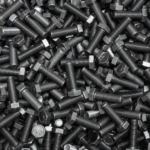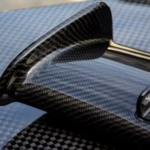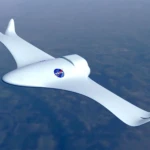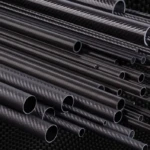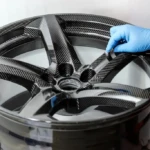introduce
Over the past two decades, China’s CNC machining industry has undergone earth-shaking changes, becoming a global manufacturing power and reshaping the manufacturing landscape. Driven by rapid technological progress, increased investment and the booming domestic market, China’s CNC machining industry has shown a characteristic of equal emphasis on innovation and efficiency. This article delves into the factors behind the rise of CNC machining in China, its impact on global manufacturing, and the future of this dynamic industry.
Learn about CNC machining
What is CNC machining?
CNC machining is a process that involves using computer-controlled machines to produce precision parts from a variety of materials, including metals, plastics, and wood. Unlike traditional machining methods that rely on manual labor and human intervention, CNC machining is highly automated, allowing for greater accuracy, repeatability, and efficiency.
Key components of CNC machining
- CNC machine tools: These are the main tools used in the manufacturing process and include milling machines, lathes, lasers, plasma cutters, and 3D printers.
- computer software: CAD (computer-aided design) and CAM (computer-aided manufacturing) software play a vital role in part design and CNC machine tool control.
- control system: These systems interpret digital designs and translate them into machine movements, ensuring precise cutting and shaping of materials.
The evolution of China’s CNC machining industry
historical background
China’s CNC journey began at the end of the 20th century, when the government initiated large-scale economic reforms. However, the real catalyst for change came in the early 2000s, when China joined the World Trade Organization (WTO) in 2001, opening the door to foreign investment and technology transfer.
technological progress
The progress of China’s CNC machining industry can be traced to its adoption of cutting-edge technologies such as:
- Industry 4.0: The introduction of the Internet of Things (IoT) and artificial intelligence (AI) enables real-time monitoring and predictive maintenance during the machining process, thereby significantly improving efficiency.
- Additive manufacturing: The fusion of traditional CNC machining and 3D printing technology brings innovative production techniques that enable complex geometries and reduce waste.
- smart factory: The development of smart factories equipped with integrated systems that communicate and adapt, simplifying operations and reducing labor costs.
Factors promoting the development of CNC machining in China
economic factors
- Low labor cost: One of China’s most significant advantages is its relatively low labor costs, which attracts foreign manufacturers seeking to reduce production expenses.
- government support: The Chinese government has implemented policies to encourage technological progress and global competitiveness, including tax incentives, subsidies and research funding.
- Expand domestic demand: The rise of China’s middle class and growing consumer market have led to increased demand for high-quality manufactured goods.
political factors
- stability and policy: The Chinese government is committed to maintaining a stable political environment, which has enhanced the confidence of investors and manufacturers.
- manufacturing initiatives: Initiatives such as “Made in China 2025” aim to transform the country into a manufacturing powerhouse by developing high-tech industries such as CNC machining.
The impact of globalization
Globalization has also had a significant impact on China’s CNC machining industry. As manufacturers shift their focus from purely domestic markets to global supply chains, demand for advanced manufacturing solutions continues to increase. This shift has led to the establishment of partnerships between Chinese and international enterprises, promoting knowledge transfer and technological innovation.
Benefits of CNC machining in China
Accuracy and quality
One of the most significant advantages of CNC machining is the ability to consistently produce high-precision parts. In an era when quality control is paramount, CNC machining ensures parts meet tight tolerances, thereby improving the quality of the final product.
Increase production speed
CNC machine tools operate with incredible speed and precision, allowing manufacturers to meet tight deadlines and meet the demands of just-in-time (JIT) production schedules. In a highly competitive market, the ability to run machines continuously with minimal downtime is a significant advantage.
Flexibility and customization
CNC machining technology enables flexible manufacturing processes, allowing companies to produce a variety of components from a variety of materials. This versatility meets the needs of different industries, including aerospace, automotive and electronics, which often require customization.
Cost effective
While the initial investment in CNC machine tools and software may be high, the long-term savings in labor, material waste, and production time make CNC machining a cost-effective solution. Companies can significantly reduce operating costs and maximize return on manufacturing investments.
Challenges facing China’s CNC machining industry
fierce competition
With the expansion of China’s CNC machining industry, companies are facing fierce competition at home and abroad. This competitive landscape requires continuous innovation and efficiency improvements to maintain market position.
skills gap
Despite rapid technological advances, skills gaps in the workforce persist. The industry is challenged by a shortage of engineers and technicians trained to operate and program CNC machine tools.
environmental issues
As the demand for sustainable manufacturing practices continues to grow, the CNC machining industry must address environmental issues related to waste generation and energy consumption. Emerging technologies such as environmentally friendly lubricants and energy-saving machines are being researched and developed to alleviate these problems.
Future trends of China’s CNC machining industry
Use advanced technology
The future of CNC machining in China is exciting, especially when integrating advanced technologies such as:
- AI: Artificial intelligence algorithms can analyze production data in real time, optimize processing processes and enhance decision-making.
- big data analysis: Manufacturers can use data analytics to predict trends, improve operational efficiency and identify potential downtime.
Pay attention to research and development
China is expected to continue to prioritize R&D in the field of CNC machining. Investment in R&D is critical to remaining competitive in an evolving manufacturing environment. Collaboration between universities, research institutions and industry will play an important role in driving innovation.
Green manufacturing practices
Sustainability is becoming increasingly important in manufacturing processes. China’s CNC machining industry is likely to shift towards green practices, including the use of biodegradable materials, energy-saving machines and waste reduction strategies.
Conclusion: The future of CNC machining in China is bright
The rise of China’s CNC machining industry demonstrates China’s determination to position itself as a global manufacturing leader. As technological advances continue to reshape industries, challenges such as competition and technical skills shortages must be addressed head-on. By investing in education, advanced technology and sustainable practices, China is steadily solidifying its dominance in global CNC machining.
FAQ section
What is CNC machining used for?
CNC machining is used in various industries to manufacture precision parts in aerospace, automotive, electronics, medical equipment, and more.
What are the advantages of CNC machining over traditional methods?
CNC machining offers greater precision, shorter production times, greater potential for customization, and cost savings in the long run compared to traditional machining methods. Its automation features also reduce human error.
How does CNC machining contribute to sustainable development?
CNC machining contributes to sustainability by reducing material waste, allowing the use of environmentally friendly materials and increasing energy efficiency in production processes.
Is China’s CNC machining industry expected to grow further?
Yes, China’s CNC machining industry is expected to continue growing due to growing domestic demand, technological advancements, and government support for manufacturing initiatives.
What is the future of CNC machining in China?
The future of CNC machining in China includes the integration of artificial intelligence and data analytics, a focus on sustainable manufacturing practices, and continued investment in research and development to drive innovation and competitiveness in the industry.
Daguang focuses on providing solutions such as precision CNC machining services (3-axis, 4-axis, 5-axis machining), CNC milling, 3D printing and rapid prototyping services.


